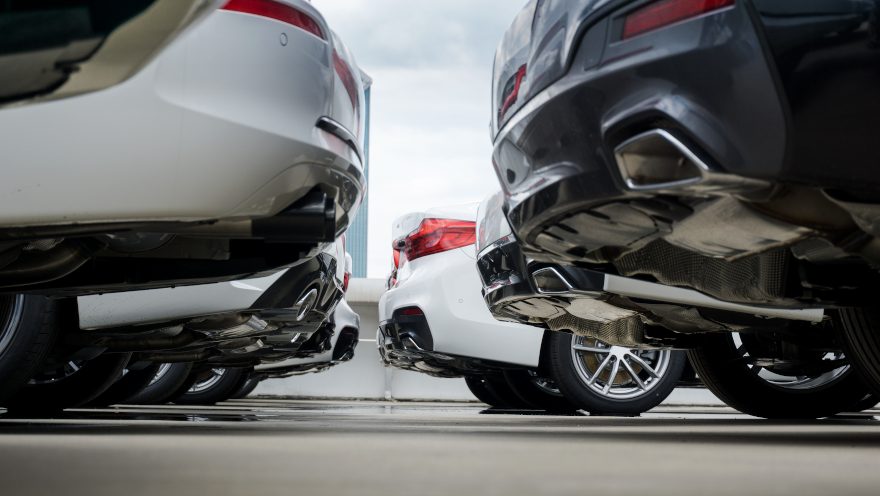Used-car sales likely double from year-ago; supply concerns mount

From a numbers standpoint, the outlook for used-car sales in March is a bright one. But the pre-owned market may not be immune to fallout from supply challenges currently facing the new-car market.
TrueCar is forecasting 3.6 million used-vehicle sales this month, which would beat February figures by 1% and eclipse year-ago numbers by 104%.
It is projecting 10.33 million used-car sales for the first quarter, which would beat year-ago figures (8.61 million) by 20%.
Granted, March 2020 was when COVID-19 was declared a pandemic, with lockdowns and businesses (including dealerships) forced to temporarily close.
So year-over-year comps of this magnitude are perhaps not surprising. Though speaking to the new-car market, TrueCar lead industry analyst Nick Woolard gives this context, which may help to put the used-car gain in perspective.
“The pandemic's dramatic impact on the automotive industry and U.S. economy at large began in the last two weeks of March 2020 when dealerships and OEM plants shut down and stay-at-home mandates rolled out, which gives us our first year-over-year sales compare,” Woolard said in a news release.
“Automotive sales dropped 38% from 2019, so it's no surprise that we're seeing total sales up 42% and retail sales up 53% when compared to the March 2020,” he said of the new-car market. “Looking at the year-over-year sales forecast, domestic brands such as GM and Ford, fared much better because parts of the country that hold a majority of trucks sales from these brands had not yet rolled out their state stay at home orders at this point last year.”
Still, as any baseball coach will tell you, a double is a double.
And pre-owned sales being more than twice as high as they were in March 2020 surely is a sign of strong used-car demand.
In fact, the new-car side of the market is seeing an “imbalance” of low supply and high demand, and that is spilling over into used, leading to a spike in pre-owned prices. In analysis that speaks largely to the new-car market, TrueCar senior vice president of OEM solutions Valeri Tompkins shares the used-car trickle-down effect.
“As consumers receive their stimulus checks and tax refunds, we expect demand for vehicles to increase. At the same time, production complications such as with microchips and shortages of other core materials are affecting a number of automakers, and retailers are struggling to have enough supply to meet the strong demand,” Tompkins said in a news release. “Consumers who are very specific about the vehicle they want to purchase may need to be extra patient, as they will likely have a harder time finding their first choice of color or trim when shopping.”
She added: “Vehicles are turning on dealer lots very quickly because of the supply and demand imbalance. In fact, according to TrueCar's new-car inventory data, the average vehicle is in inventory for only 56 days, which is two weeks less on the dealer lot than during this exact time last year.
“This is also causing the price of used vehicles to increase significantly year-over-year,” she said. “The average listing of the used vehicle on TrueCar is up $2,300 year-over-year, so if consumers are looking to sell their used vehicles, now is a great time.”
Supply-chain impacts like the microchip shortage are initially hitting the new-car market, obviously, but this could also have an effect on used inventory, as J.D. Power pointed out this week in an Industry Briefing Report authored by vice presidents Jonathan Banks and Tyson Jominy.
“As a result of these and other constantly shifting variables, automakers are in the process of prioritizing which vehicles they will bring to market,” their report said.
“Most American manufacturers will continue making relatively expensive trucks and SUVs because the profit margins are better than lower-priced sedans, and coupes. The trend will eventually affect what is available in the used-vehicle market as the year unfolds.”
In a mid-month reading of the Manheim Used Vehicle Value Index released last week, Cox Automotive said that used retail supply was at 34 days, according to a rolling seven-day estimate from vAuto data. That is softer than normal, the company said.
Similarly, Cox estimated wholesale used supply at 19 days, compared to the typical level of 23.
And wholesale prices continue to rise: The mid-month reading of Manheim's index was 175.5, beating March 2020 by 23.7%.
As previously reported by Auto Remarketing, dealers looking for things to cool off in the wholesale kitchen might be waiting a while based on the trio of observations Black Book offered in its latest weekly report.
“Auction sales rates, as a percentage of total offered for sale, continue to grow, with the only no-sales being the result of sellers’ unwillingness to budge on their desired pricing and buyers being hesitant due to current retail price levels,” analysts said.
“With the release of the newest round of federal stimulus into consumers’ bank accounts and the increase in demand it spurred on dealer lots, the expectation is that used demand will continue to be strong as those dealers look to replenish their inventory after a strong week of retail sales. With this knowledge, remarketers are continuing to push their floors higher each week,” they continued.
“Supply continues to be constricted as there is a reduction in rental units returning to the market, as well as trade-ins being kept by dealers and lease turn-ins being held by the grounding dealer instead of being sent to auction,” analysts went on to say.
Nick Zulovich contributed to this report.

 View The Latest Edition
View The Latest Edition

